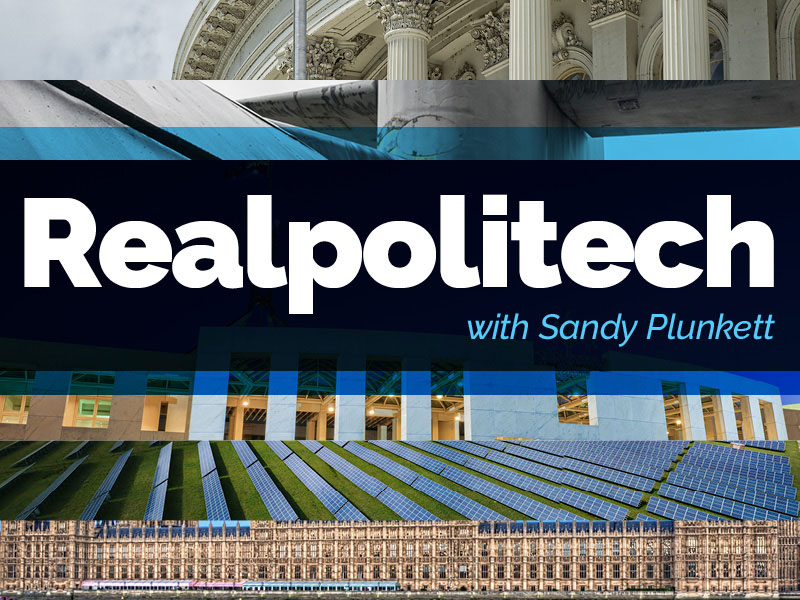When science and research organisations dependent upon government funding released press releases this week enthusiastically cheering the new National Science Priorities, Realpolitech, like many other industry players, wondered if we were reading off the same document.
The new national science priorities, we are told, are about “explicitly making science a foundation for the federal government’s Future Made in Australia (FMiA) policy”, a technical and logistical test for the nation that has been likened in scale and scope to historical war-time challenges.
The priorities are transitioning to a net zero future; supporting healthy and thriving communities; elevating First Australians’ knowledge systems; protecting and restoring Australia’s environment; and building a secure and resilient nation.
“By integrating these targeted priorities into grant guidelines across government, we’ll channel funds into the things that matter most – a greener economy; pandemic preparedness; and uplifting wellbeing,” Industry and Science minister Ed Husic said.
Does targeted now mean vague or feelgood? Because that’s how the long-awaited new science priorities read.
There are many more questions arising from the list, the first refresh since 2015 under former Prime Minister Malcolm Turnbull’s “Ideas Boom” era, when the priorities focused on specific verticals, such as food, soil and water.

How do these new priorities, written by the Department of Industry, align with Treasurer Jim Chalmers’ repeated exaltations over the past two years that we are living through a defining decade of churn and change, with an economic outlook framed by fraught and fragile global conditions?
How do they reflect Prime Minister Anthony Albanese’s comments that the scale of the challenges facing the country can be likened to previous war time challenges?
“Working together, our universities and research institutes will collaborate to train more Australians in nuclear engineering. We’re already sharing skills and knowledge and expertise across our borders, lifting the capability and capacity of all three countries,” the Prime Minister said at the June 2023 re-affirmation of the AUKUS partnership at the White House.
But nuclear research is not one of the five new national science priorities.
“The science priorities are worthy goals for improving our environment and society. But do nothing directly to build our economy,” Professor Toby Walsh wrote on LinkedIn.
“Innovators should ignore them,” another high-profile Australian tech-entrepreneur told Realpolitech. “The (research) institutions are compromised.”
“They’re not priorities at all of course, they’re aspects of a feelgood mission statement,” said yet another.
“There is almost no mention of manufacturing – the major focus of the NRF – other than related to critical minerals. Nor of ICT, mining or finance. There is very little reference to the impact of research on economic outcomes.”
When announcing the new priorities last week, Minister Husic revealed that he had asked Australia’s Chief Scientist Dr Cathy Foley to lead a large-scale community consultation process across the political spectrum to inform those priorities.
There was “remarkable consensus” from hundreds of people across science, research and industry, according to both Minister Husic and Dr Foley.
“Everyone said that to be successful as a country we need to have a prosperous nation,” Dr Foley insighted.
Read that twice.
After months of consultations, Australia’s chief scientist can confidently say that to be successful, we need to be, err … successful.
Everyone trips up on their words sometimes. Perhaps that’s what happened there.
But It’s hard enough for many Australians to build a mental bridge between scientific research and their prosperity or wellbeing, despite the often-repeated line – typically rolled out every year during National Science Week – that “science is central to…”
But at a time when most Australians are struggling to pay energy bills, groceries, mortgages and rents, the new national science priorities – now framed as “missions” – sound like warm and fuzzies for a fantasy island future out of touch with domestic and global economic, technological and competitive reality.
There is only an indirect and defensive, safety focus on artificial intelligence (AI) for instance because the government has decided they can’t ‘sell’ the benefits of investing in AI research and application to anxious voters who have been fed fear and loathing about AI taking their jobs.
Even energy tech and the myriad and critical digital systems that are key to making it work and connecting to a modernised grid are only mentioned by implication under the “transitioning to net-zero” priority.
In the post Covid interventionalist 21st century industry policy era, net zero mandates and green energy transitions, progressive governments like to say they are parties of science.
Sorry…I mean all caps SCIENCE, like it’s one infallible deity.
But breakthrough science is a contact sport. It’s slow and messy and expensive. And as Australians and most of the world now knows from the Covid pandemic, it is also highly fallible.
And science by itself doesn’t create wellbeing or economic growth. People who apply science and technology to build products, companies and services do that.
We’ve long lamented that there are not enough Australians using science and technology as a platform for new-to-the world scalable businesses.
Australian science without industry demand or pull means that science rarely makes out of the lab much less into the domestic and global economies.
This has been Australia’s forever problem.
It was former Prime Minister Bob Hawke who created the first national science priorities framework 33 years ago, when Australia was in the midst of a severe recession.
The catalyst for the proverbial recession we had to have was high inflation, high interest rates, property speculation and declining business and consumer confidence. Sound familiar?
The then priorities outlined in a document titled “Australia’s Science and Technology Strategy” were about guiding Australia’s research and development efforts to promote innovation and economic growth.
Priority areas were all around key technology driven industries including biotech; InfoTech; environmental sciences, energy technology; health sciences and advanced materials and manufacturing technology.
This was the era of global expansion and standout success for then-young science-based companies like Cochlear and ResMed, as well as the much older biotech giant CSL Limited, which went public in 1994.
Today, Australian R&D spend at 1.6 per cent of GDP is the lowest in the OECD by a wide margin and has been declining for well over a decade. There are no signs of it increasing, despite federal Labor’s assertion that it wants to lift R&D spend to 3 per cent of GDP by 2030.
Yet these science priorities make no mention of the need to boost business and industry demand for research and development and science-based solutions to the myriad wicked problems facing the nation and the world.
“It is extraordinary and perplexing how the Department for Industry, Science and Resources could come up with the strategy it has without any reference to industry demand for that research, given how critical they are of universities not being more engaged with industry,” said another researcher.
The fact that all of the above comments were asked to be off the record reveals another key problem. Government capture of our erstwhile science and research organisations.
Too many top tier research leaders won’t risk public critique of government policy for fear of reprisal.
And that explains the consensus.
So, Australia’s R&D is at an all-time low. We’ve decimated industrial and manufacturing capability over many decades and our economic complexity ranking is on a level with other developing countries – 93rd out of 123 in the Harvard Economic Complexity Index.
Yet we have a science and research community that are blindly cheering vague, ideologically driven, government-defined priorities.
Meanwhile, as we wait for yet another R&D system review, past and recent R&D system analysis – which clearly articulate the problems – collect dust somewhere in Industry & Science Minister Ed Husic’s office.
This includes this one from the Minister’s own independent advisory agency, Industry Innovation and Science Australia (IISA).
It was published in September 2023 and rightly frames Australian R&D collaboration and commercialisation barriers in the context of Australia’s industry and economic structure, which has little demand or absorptive capacity for high impact, new-to-the-world R&D.
“Few Australian businesses are accustomed to the type of high-risk, high-reward innovation that is required to transform and diversify the economy. Only 1 per cent to 2 per cent of Australian businesses innovate in ways that are new to the world,” the report states.
Australia’s industry structure is dominated by small businesses (93 per cent of Australian businesses) with low levels of free cash flow and human resourcing. These characteristics limit the capacity to invest in adopting and scaling innovation.
“The “missing middle” (low number of medium-sized businesses) means that the scaling of innovation and realisation of commercial benefits either fails or is taken offshore.
“Many government programs and interventions assume businesses’ motivation for innovation, risk appetite, capability and capacity, which is underdeveloped or may not exist – and the competitiveness of businesses and sectors continues to decline.”
The IISA report also says the marketplace for the supply and demand for innovation in Australia is opaque.
There is under-serviced market-making between those supplying and demanding innovation. The pathways for forming relationships necessary for successful industry-research collaboration are limited and inefficient. The business models for the engagement of facilitators and market makers have not been optimised to maximise markets.
Venture capitalist and National Reconstruction Fund (NRF) board member, Daniel Petre bluntly summed a big part of the problem recently:
“Generally speaking, Australian companies in oligopoly industries, where competition from global players is non-existent, spend bugger all on true R&D.”
“Their R&D is watching what is happening overseas and then bringing the idea or product to Australia. So big companies more often than not suck at proper allocation to R&D.”
Australia can no longer afford this complacency or naivete about just how much the structure and makeup of the Australian economy is a handbrake on innovation, modernisation and productivity growth. The latter is the lowest in 60 years.
Whether you call them missions or not, our researchers, innovators and corporate business leaders need to shift from the feelgood risk mitigation priorities and culture to a crisis management approach if we are to have any chance of adequately responding to global competition, geopolitical risk and unexpected events like pandemics or war.
Do you know more? Contact James Riley via Email.

